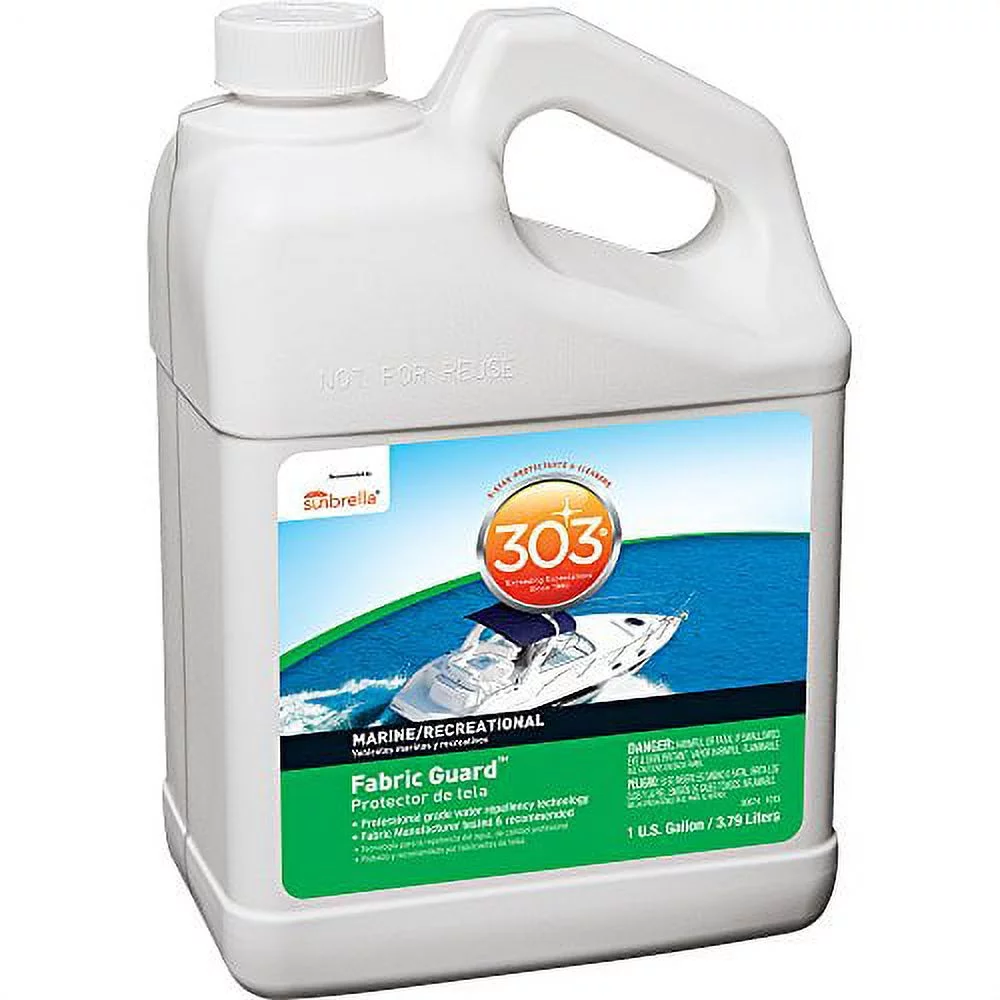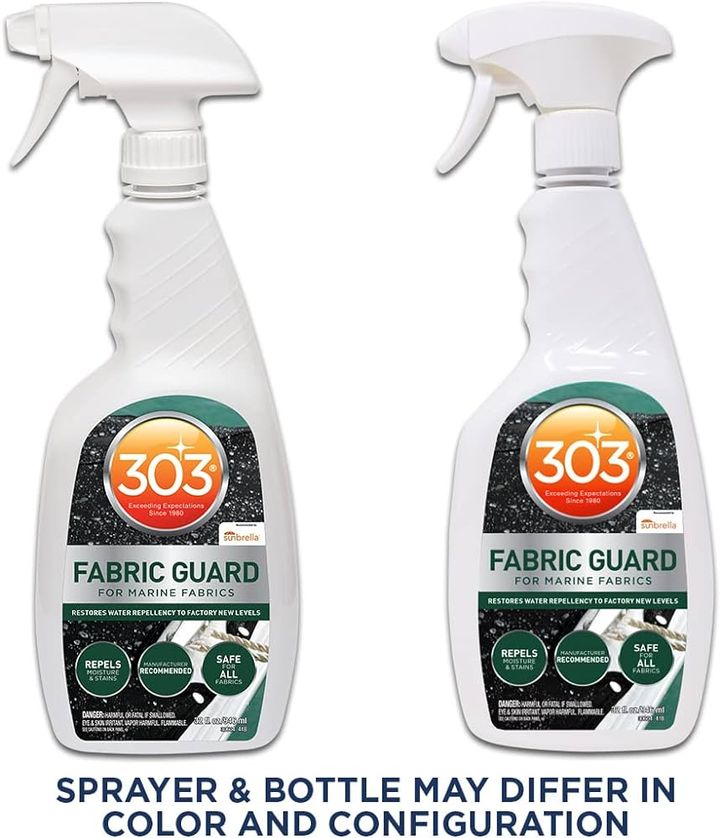


Fabric protectors are essential products for preserving the appearance and longevity of various textile items in our homes and vehicles. Among the numerous options available, two brands stand out as industry leaders: 303 Fabric Guard and Scotchgard. These products aim to create an invisible barrier that repels liquids, dirt, and stains, making cleaning and maintenance more manageable. As consumers, it's crucial to understand the differences between these popular fabric protectors to make an informed decision.

Fabric protectors like 303 Fabric Guard and Scotchgard are designed to create a protective barrier on fabrics, repelling water, stains, and other liquids. However, their formulations and compositions differ, impacting their performance and suitability for various materials. Here's a quick comparison:
| Feature | 303 Fabric Guard | Scotchgard |
|---|---|---|
| Composition | Water-based formula with proprietary blend of polymers and fluorochemicals | Solvent-based product containing fluorochemicals and synthetic compounds |
| Environmental Impact | Environmentally friendly, safe for indoor use | Concerns about potential environmental impact |
| Safety | Safe for children and pets | Potential health risks, proper ventilation required |
Both products can be applied using a spray bottle or a brush, following the manufacturer's instructions. However, their compatibility with different fabrics varies.
303 Fabric Guard is suitable for use on a variety of materials, including:
Cotton
Polyester
Nylon
Canvas
This makes it an excellent choice for protecting your car's upholstery, floor mats, and even convertible tops.
Scotchgard, while compatible with many fabrics, may not be recommended for certain delicate materials. It's essential to check the manufacturer's guidelines before application to ensure compatibility.
When it comes to effectiveness, both products have proven their ability to repel water, stains, and other liquids. However, user reviews suggest that Scotchgard may provide slightly better water repellency, while 303 Fabric Guard excels in stain resistance.
In terms of durability, Scotchgard is generally considered to have a longer-lasting effect, with some users reporting protection lasting up to a year or more. On the other hand, 303 Fabric Guard may require more frequent reapplication, typically every few months, depending on usage and exposure.
One of the key advantages of 303 Fabric Guard is its environmentally friendly formulation. As a water-based product free from harmful solvents, it is a safer choice for indoor use and around children and pets, making it an ideal option for protecting your car's interior.
Scotchgard, however, has faced scrutiny due to the presence of potentially harmful chemicals, such as perfluorooctanoic acid (PFOA) and perfluorooctane sulfonate (PFOS). While the manufacturer claims to have phased out these compounds, some users remain cautious about the product's environmental impact and potential health risks, especially when used in enclosed spaces like a car's interior.
User reviews and testimonials can provide valuable insights into the real-world performance of these products. Many users praise 303 Fabric Guard for its ease of application, effectiveness against stains, and safe formulation, making it a popular choice for car enthusiasts who prioritize environmental friendliness and safety.

Here are some common user experiences with 303 Fabric Guard:
Easy to apply and distribute evenly
Effectively repels stains from food, drinks, and dirt
Safe to use around children and pets
Doesn't leave a strong chemical odor
Scotchgard, on the other hand, receives high praise for its water-repelling capabilities and durability. However, some users have expressed concerns about its potential environmental impact and the need for proper ventilation during application, especially in confined spaces like a car's interior.
Common user experiences with Scotchgard include:
Excellent water repellency, even in heavy rain or spills
Long-lasting protection, often lasting a year or more
May require proper ventilation during application
Concerns about potential health risks and environmental impact
Both 303 Fabric Guard and Scotchgard are widely available in various retail stores and online marketplaces, catering to a broad range of consumers.
In terms of pricing, 303 Fabric Guard tends to be slightly more affordable, especially when purchased in larger quantities or bundled with other products from the same brand. This cost-effectiveness makes it an attractive option for car owners looking to protect their vehicle's interior on a budget.
Scotchgard, being a well-established brand, may command a higher price point. However, it is often available in different sizes and formulations to suit various needs and budgets, providing flexibility for those willing to invest in its long-lasting protection.
Here's a comparison of pricing and availability:
| Factor | 303 Fabric Guard | Scotchgard |
|---|---|---|
| Pricing | More affordable, especially in larger quantities or bundled | Higher price point |
| Availability | Widely available in retail stores and online | Widely available in retail stores and online, different sizes and formulations |
When choosing between 303 Fabric Guard and Scotchgard for protecting your car's interior, it ultimately comes down to your specific needs and priorities.
If you're primarily concerned with stain resistance and environmental friendliness, 303 Fabric Guard may be the better choice. Its safe formulation and effectiveness against stains make it an excellent option for protecting your car's upholstery, especially if you have children or pets.
However, if you require maximum water repellency and durability, particularly for high-exposure applications like convertible tops or outdoor gear, Scotchgard may be the more suitable option. Just be sure to take necessary precautions during application, such as proper ventilation, and follow safety guidelines.
Here's a summary of the key factors to consider:
| Consideration | 303 Fabric Guard | Scotchgard |
|---|---|---|
| Stain Resistance | Excels in stain resistance | Good stain resistance |
| Water Repellency | Good water repellency | Excellent water repellency |
| Environmental Friendliness | Environmentally friendly | Concerns about environmental impact |
| Safety | Safe for children and pets | Potential health risks, proper ventilation required |
| Durability | Requires more frequent reapplication | Long-lasting protection, up to a year or more |
| Cost | More affordable | Higher price point |
Ultimately, both products have their strengths and weaknesses, and the decision should be based on your specific fabric protection requirements, environmental concerns, and personal preferences. By carefully considering these factors, you can ensure that your car's interior remains in pristine condition for years to come.
303 Fabric Guard is a water-based, environmentally friendly formula, while Scotchgard is solvent-based and has potential environmental concerns. 303 Fabric Guard is considered safer for indoor use around children and pets.
User reviews suggest that 303 Fabric Guard excels in stain resistance compared to Scotchgard.
303 Fabric Guard may require more frequent reapplication, typically every few months, while Scotchgard's protection can last up to a year or more.
303 Fabric Guard is suitable for a wide range of fabrics, including cotton, polyester, nylon, and canvas. Scotchgard may not be recommended for certain delicate materials.
Both products can be applied using a spray bottle or brush, following the manufacturer's instructions. User reviews suggest 303 Fabric Guard is easy to apply and distribute evenly.
303 Fabric Guard is considered safe for indoor use, while Scotchgard may have potential health risks, requiring proper ventilation during application.
303 Fabric Guard tends to be more affordable, especially when purchased in larger quantities or bundled with other products from the same brand.
Yes, both 303 Fabric Guard and Scotchgard are suitable for protecting car upholstery, floor mats, and convertible tops.
Scotchgard's excellent water repellency and long-lasting protection may make it a better choice for outdoor gear that requires maximum water resistance.
303 Fabric Guard is environmentally friendly, while Scotchgard has faced scrutiny due to the presence of potentially harmful chemicals, though the manufacturer claims to have phased out some of these compounds.

Sarah isn't your average gearhead. With a double major in Mechanical Engineering and Automotive Technology, she dived straight into the world of car repair. After 15 years of turning wrenches at dealerships and independent shops, Sarah joined MICDOT to share her expertise and passion for making cars run like new. Her in-depth knowledge and knack for explaining complex issues in simple terms make her a valuable asset to our team.










